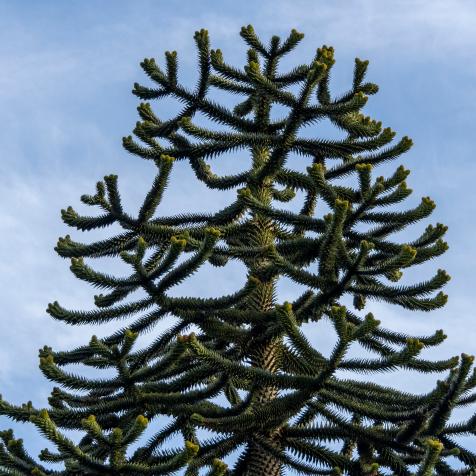
Mint Images
Why the Long Face? Extinct Headbutting Relatives Reveal Giraffes' Neck Evolution
Pioneered by Darwin, giraffes have been used as a classic example of how animals adapt and evolve. Giraffe’s long-neck evolution has long been attributed to foraging for sustenance in the high canopy, now researchers argue that selection for head-butting combat played a role in the long length of giraffe necks.
Researchers at the Chinese Academy of Sciences’ Institute of Vertebrate Paleontology and Paleoanthropology have been studying the Discokeryx xiezhi, a fossil relative of the Giraffe. In 1996, the fossil was found in China’s northwestern Junggar Basin and since then more fossils of the same species have been discovered. During its initial discovery, researchers were confounded by the unusual skull and vertebrae. Within the Discokeryx xiezhi, scientists found thick craniums with disklike headgear, thickened cervical vertebrae, and complex head and neck joints unlike any ever seen.
Y. WANG AND X. GUO
In recent years, the Chinese research team found that the unusual fossil belongs to a giraffoid, helping them use the past to understand the present evolutionary trait. While many believed the giraffes' long necks evolved to allow them to reach their tall foliage meals, giraffe behavior showed another essential purpose. Giraffe’s long necks are also used to compete for female attention during courtship and mating rituals. When comparing the structure of their horns with cattle, sheep, and deer, the research team found that giraffes have larger variations in horn formation. Their analysis suggests that giraffe mating competition is more intense than their horned mammal adjacent.
Within the giraffe social hierarchy, males with the longest neck are at the top and this trait becomes a force of why giraffe necks evolved to be so long. Shiqi Wang, study author and associate professor at the Chinese Academy of Sciences’ Institute of Vertebrate Paleontology and Paleoanthropology, explains the evolution patterns of the giraffe and their relatives stating, “Both living giraffes and Discokeryx xiezhi belong to the Girraffoidea, a superfamily. Although their skull and neck morphologies differ greatly, both are associated with male courtship struggles and both have evolved in an extreme direction.”
By studying Discokeryx xiezhi’s tooth enamel, scientists have determined their living environment, in open grasslands with patchy bushes and trees. During the Miocene period (17 million years ago), Earth was covered in lush vegetation and warmth. Within the giraffoid’s home, the Xinjiang region had a more arid climate with a more barren habitat that caused the species to have more environmental pressure to survive. This climate caused more intense fights for female giraffoids. These giraffe relatives were forced to evolve and develop “necking”, the neck-fighting style to succeed in mating rituals. This adaptation caused the modern giraffe’s neck to grow and evolve over the years.
This team hopes to discover more fossils so that the information can be used as a comparison with other mammals and dinosaurs.


















